At the start of 2021, I had committed myself to a 365 photo challenge. I hadn’t shot “seriously” in years, and I needed some way of cajoling myself out of a deepening creative death spiral. The thought of spending time in front of a screen editing RAW files was so utterly unappealing that I started the year off shooting on my iPhone. It got me shooting again, but, to me, it didn’t feel like photography.
By March of 2021, the bulk of my iPhone post processing had moved in the direction of film emulation (and in some cases even camera emulation). The glaring irony of this approach was not lost on me, so in March of 2021 I purchased a Canon Sprint off of eBay for just over 10 bucks. To my excitement, it actually worked. That same month I would go on to purchase a Ricoh AF-5 and a Kodak Retina Automatic II for around $25 apiece, both fully functional.
By the end of 2021, I had shot dozens of roles of film with around 10 different cameras using half-a-dozen film stocks. I learned a lot about light, a lot about film, and a lot about the importance of finding your process. This is what I hope to share in the form of contributions to “5 frames with…”
My transition back into film started with Kodak Ultramax 400 and my new used Canon Sprint. I shot film back in the day, but not enough to be able to identify different film stocks based solely on their looks. As I started shooting, I found myself favoring light and hues over subject matter. As a result, some of these early shots are admittedly ugly. What they lacked in beauty, they made up for in learning the film.
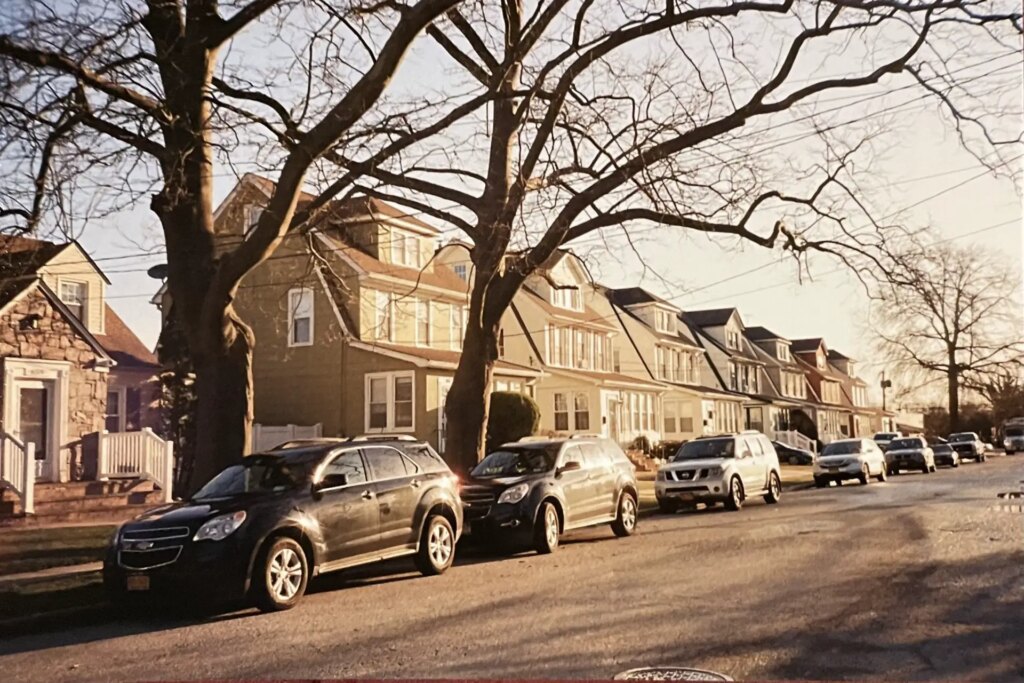
I reframed and shot three versions of this image, a bad habit I picked up after years of shooting digitally. Film quickly breaks you of that silly tendency, and teaches you to compose and consider before committing.
I was quite pleased by the way Ultramax captured the orange hue of the morning sun behind me. It also managed to keep the shadows in the lower right well defined and true to color. I also like the chaotic lines created by the barren trees atop the repetitive, manmade forms of the houses and cars.
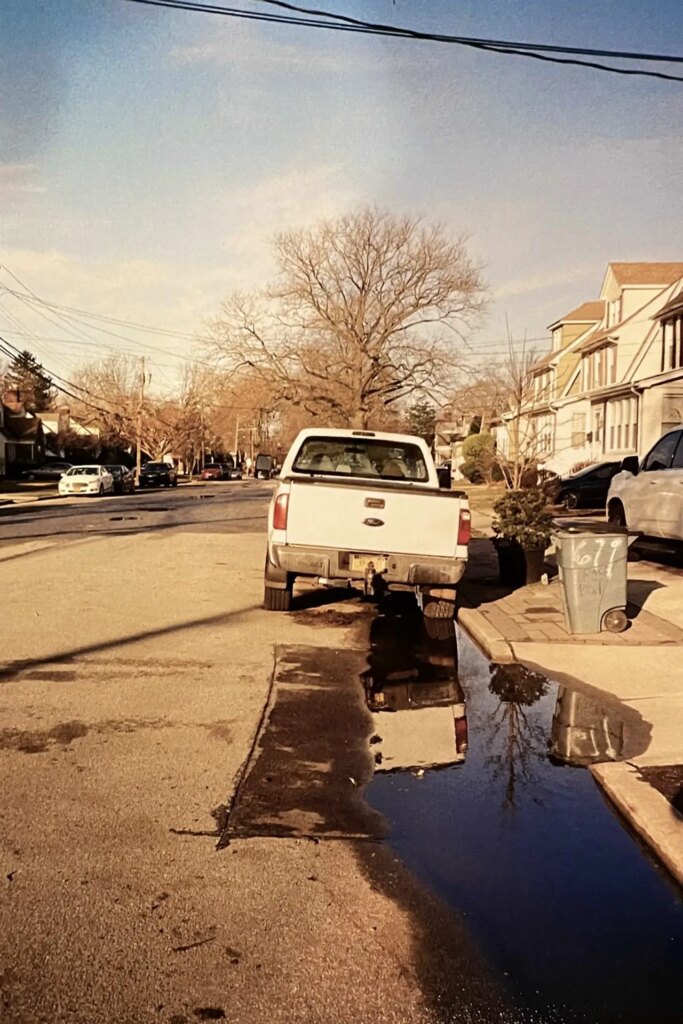
Same street at the same time from a different angle. What caught my eye was the reflection of the truck and sky. It didn’t quite translate when scanned, but Ultramax rendered a beautiful, deep and vibrant blue in that puddle–a striking complement to the orange-bathed street and pavement.
I’m not sure what caused that grainy mess in the sky, which was made much more apparent by the scan.
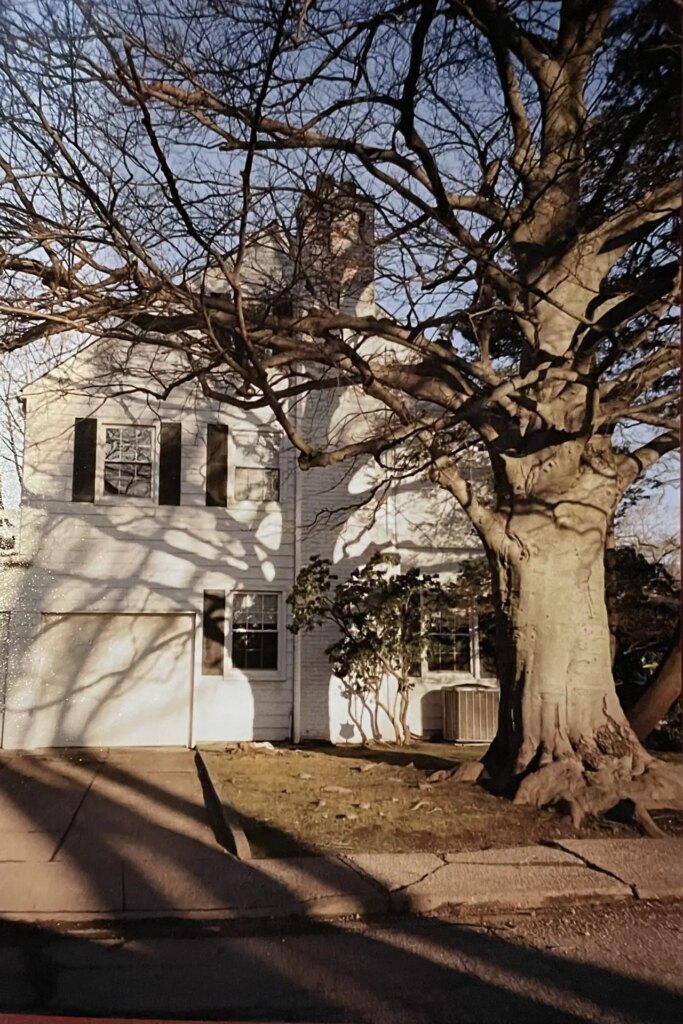
The shadows are what drew me to this spot, though the picture is admittedly kind of homely. There are too many lines drawing the viewer’s eye in too many directions simultaneously. And while the yellowish light isn’t horrible, it doesn’t save the picture from being confusing and pointless.
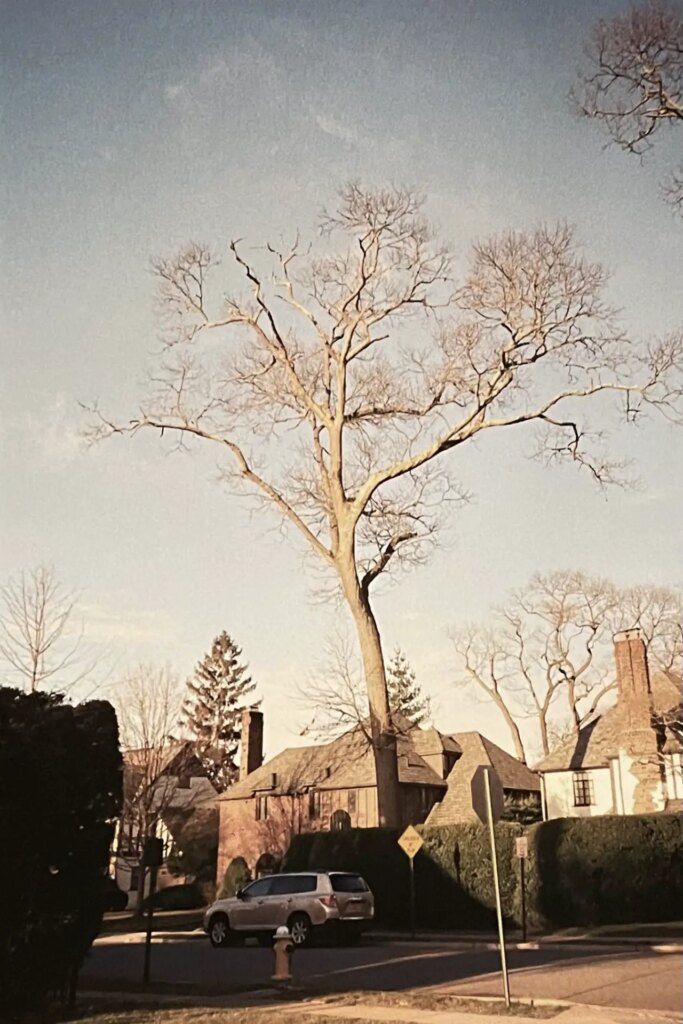
A much older home, situated about only a mile away from the three shots above. I wanted to capture the late-day light reflecting off the front of the house and tree. Unfortunately, to do so I had to shoot it at an angle down a perpendicular street. I like the light, but this shot most certainly does not capture the grandeur of the very large home dwarfed by the even larger tree.
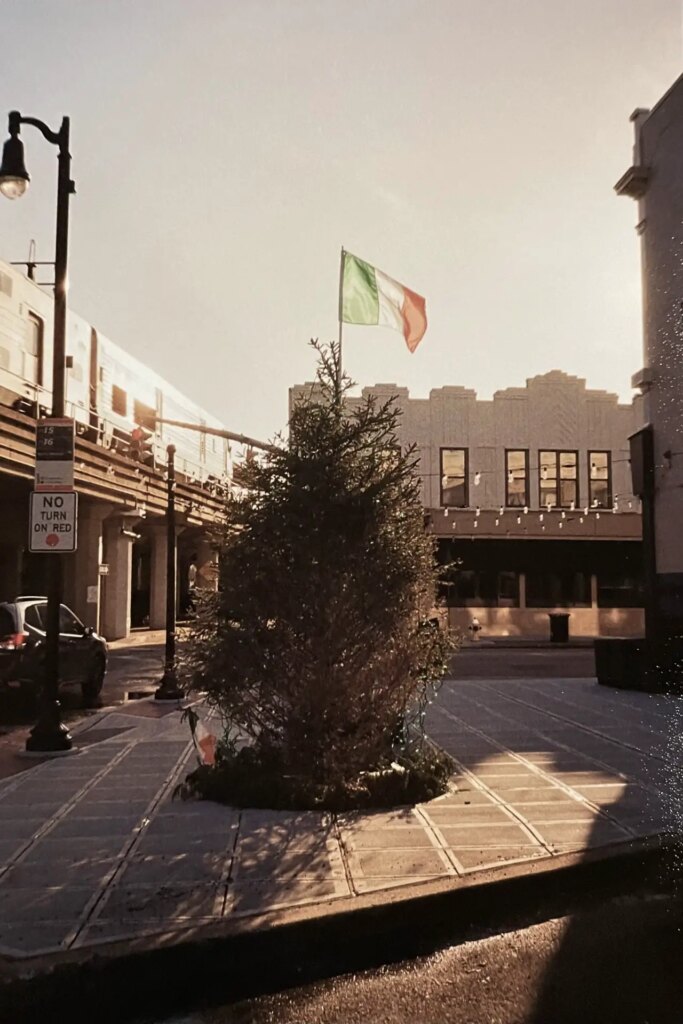
I’m ending with the most interesting of the lot. It’s early March, and the sun sets just around the time of the evening rush hour. On the trestle to the upper left you can see the computer train ushering folks back to suburbia from their Manhattan offices, many of whom are prone to pop into one of our local pubs to help with the work/life transition. The restaurant in the background closed during COVID; the dance studio above long before.
This shot could easily have been blown out. But I’ll be damned if that 37 year-old, battery operated, plastic block of a camera didn’t make all of the right choices. (I believe I metered off the top building.) I’m particularly happy with the abstract form of the light as it spills across the sidewalk, then into a puddle by the curb, and then, finally, into the street.
When I saw the prints for the first time last year, I was disappointed. I’m not sure exactly what I was expecting, but to me the images lacked character. They were “correct”, but they fell far short striking, unique or even noteworthy. In retrospect, perhaps what I was reacting to had more to do with assessing these analog snapshots through the eyes of a digital shooter after years of capturing full frame RAW. Had I been shooting digitally, every one of these images would have been captured multiple times with incrementally tweaked exposure settings, then processed with painstakingly applied curves, color grading and miscellaneous visual minutia probably not discernable to anyone no matter how high quality the printed output. On some level, perhaps what I was expecting was that these snapshots would be just as good as the end result of the digital process.
But they’re not, nor is that a realistic expectation. In fact, as I continued to shoot throughout 2021 I came to realize that it was that sort of “perfection” that I was trying to get away from. I didn’t know it at the time, but that’s why I gravitated towards scouring eBay for inexpensive, simple film cameras rather than dusting off my AE-1 or Nikkormat. I wanted to yield control of the end result, not master it. I wanted to feel the constraints of technical limitation so that I could find creative ways of breaking free. I wanted to reacquaint myself with photography writ large and what it felt like when every shot was a risk, and the happy accident was the reward.
Across the board, Ultramax faithfully captured the orange golden Magic Hour light, and that plastic, pocket-sized Canon constantly made remarkably good exposure choices. And that was all I really needed to know to begin my year-long journey back into film.
This roll was developed at Rockville Camera, who used a Noritsu scanner to produce the prints. The images above are “scans” of the prints created with the iPhone camera app. In all cases, the saturation was reduced between 20-40 to compensate for that iPhone (over-)saturation, and to make the images on the screen match the original more closely.
Share this post:
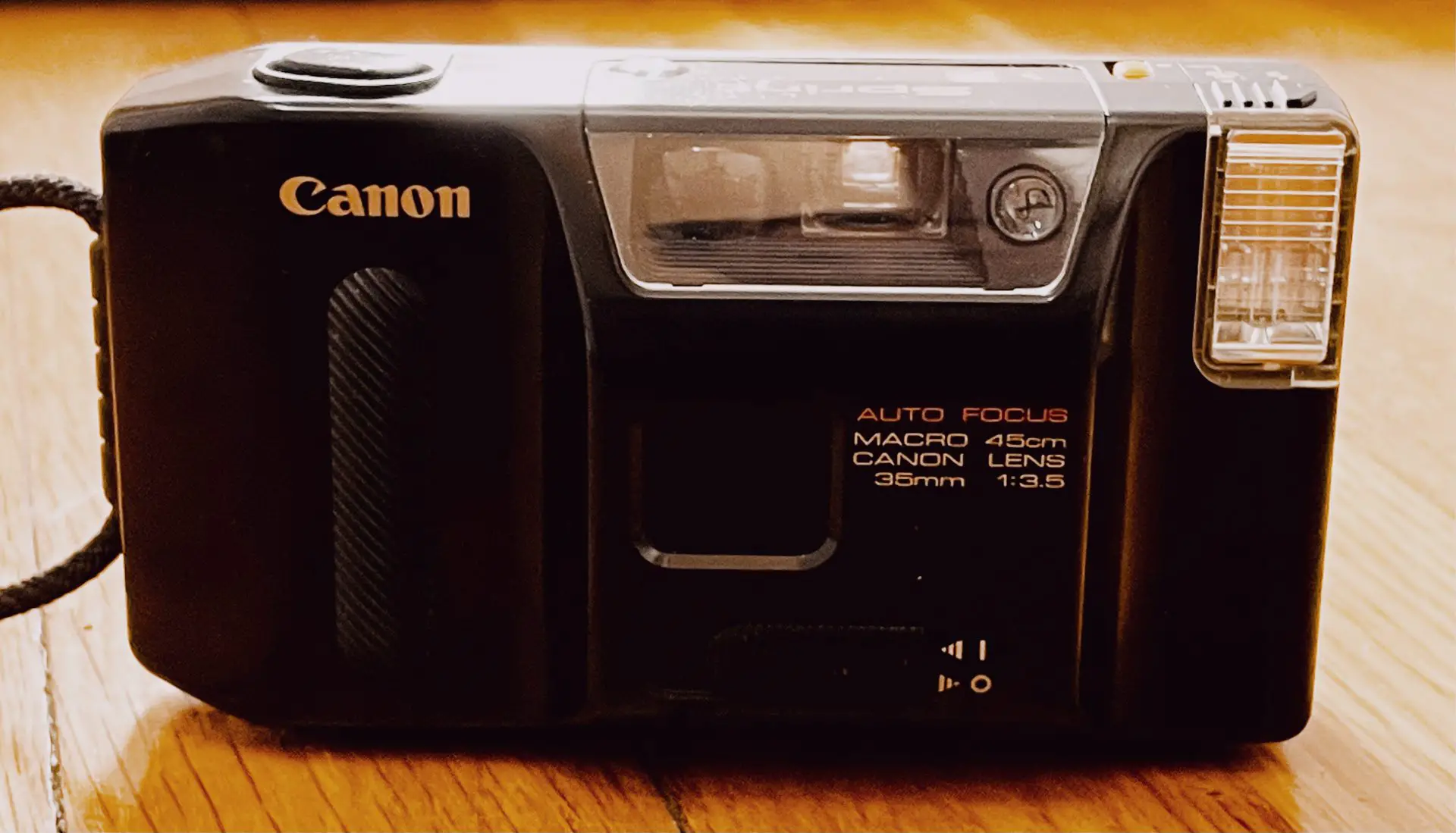


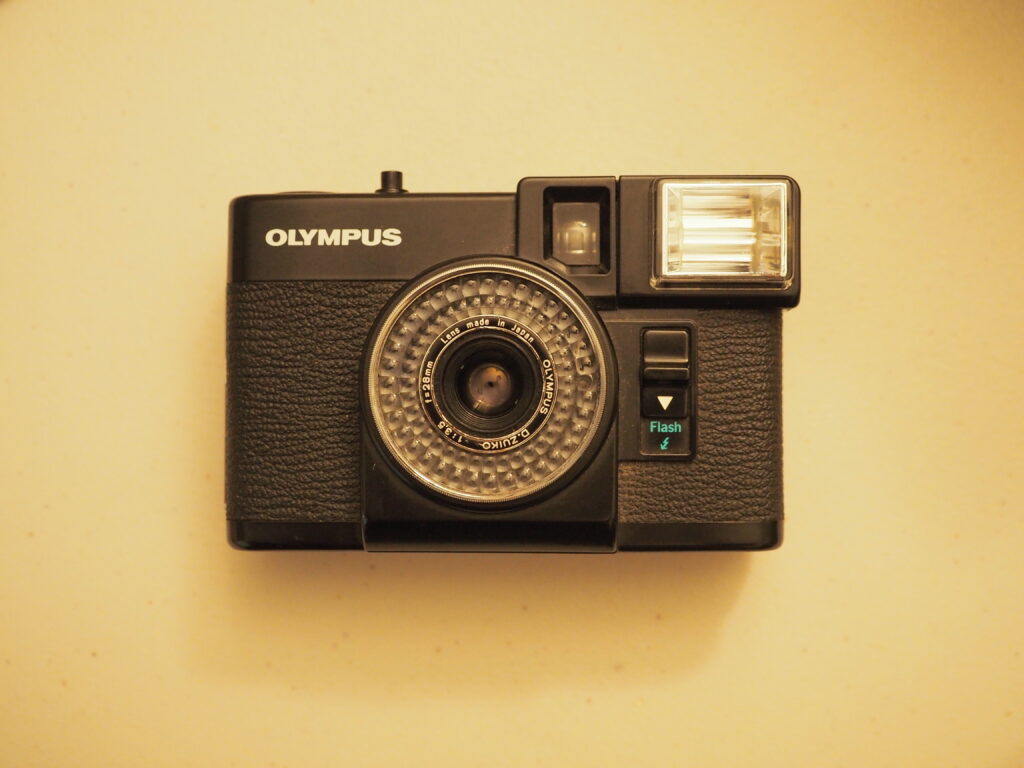





Comments
Pál Krammer on 5 Frames with Kodak Ultramax 400 and a 1985 Canon Sprint – By Michael Maliner
Comment posted: 28/08/2022
Comment posted: 28/08/2022
Comment posted: 28/08/2022
davesurrey on 5 Frames with Kodak Ultramax 400 and a 1985 Canon Sprint – By Michael Maliner
Comment posted: 28/08/2022
One of the best, most thought provoking pieces I have read on here.
Comment posted: 28/08/2022
Michael Maliner on 5 Frames with Kodak Ultramax 400 and a 1985 Canon Sprint – By Michael Maliner
Comment posted: 28/08/2022
Peter S on 5 Frames with Kodak Ultramax 400 and a 1985 Canon Sprint – By Michael Maliner
Comment posted: 31/08/2022
Comment posted: 31/08/2022